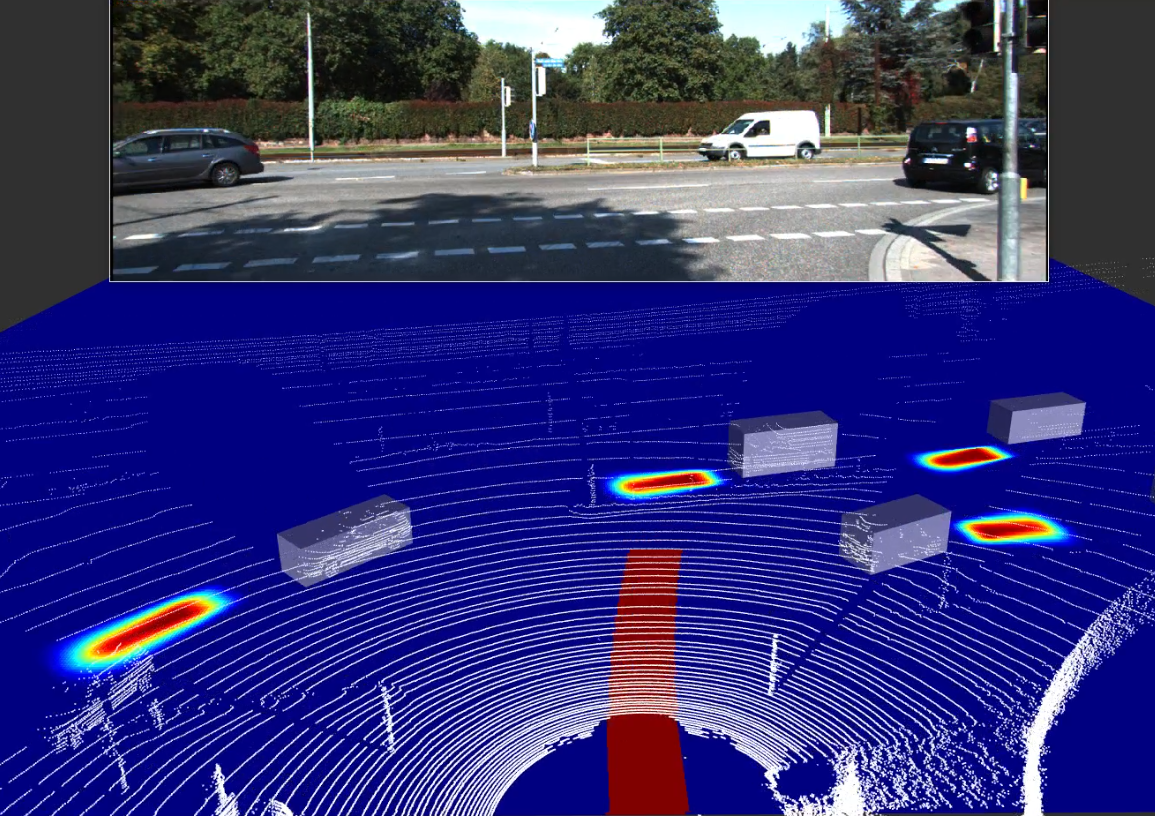collision_risk_estimation
Collision risk estimation using stochastic motion models.
This is a new approach, based on stochastic models, to predict the future occupancy of vehicles and pedestrians. Our models only require tracked bounding box details and the class of the object from object detection method like Frustum-pointpillars, while uncertainties in sensing and prediction are captured within the stochastic nature of the models.
For more information, check out our paper: https://hal.inria.fr/hal-03416222
For installation instructions, follow installation.md
Some of the results that can be reproduced from this repository:
1. ros_node.py
2. orsp_carla.py
To cite the paper:
Unmesh Patil, Alessandro Renzaglia, Anshul Paigwar, Christian Laugier. Real-time Collision Risk Estimation based on Stochastic Reachability Spaces. ICAR 2021 - International Conference on Advanced Robotics, Dec 2021, Ljubljana, Slovenia. pp.1-6. hal-03416222








